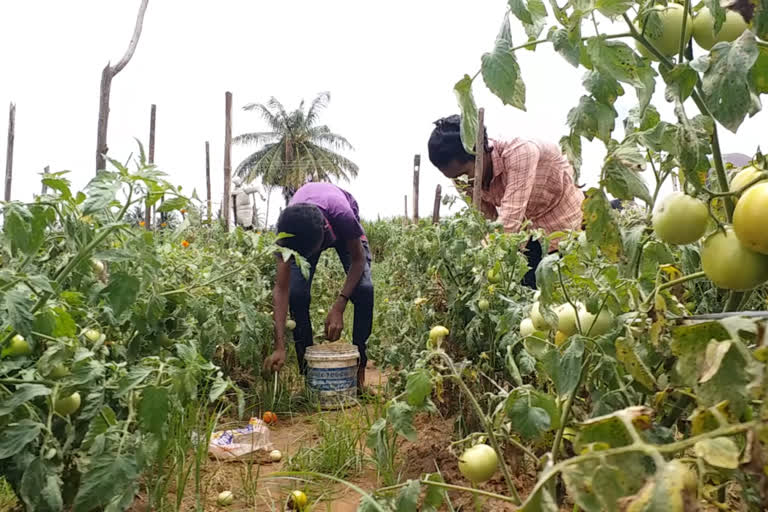Davanagere (Karnataka): With every announcement of COVID-19 restrictions, education has become a distant dream for a majority of the students as their family cannot afford to switch from traditional medium to digital medium. Since the government announced a covid lockdown to arrest the spread of the deadly virus, most of the educational institutions turned to virtual mode to provide classes. As a result, a digital divide among the poor and the rich students has been increased multiple folds.
The virtual world has not only deprived the poor students of getting an education but also forced them to engage themselves in earning a livelihood for their families.
In Davanagere in Karnataka, almost 70 percent of school and college students are helping their families by working in the fields. They said their parents are also daily earners and since there is a lockdown in the state, it has become impossible for their parents to earn their livelihood. The majority of the students who are in the age group of 15-25 can be seen working in the fields.
Read: No network, no phones - Koraput kids struggle with online learning
When ETV Bharat asked them the reason, one of the college students said, "My father is a daily wage worker and there is not much work around. If four of us have to eat from his wages, it is not possible. So, I am working in the fields to augment the family income. If I pluck tomatoes for the day, they will give me Rs 200 which is sort of helpful. I can't imagine about the smartphone for studies. When we can't make more than Rs 200 per day, a smartphone is nothing but 'luxury'."
Read: Resource crunch force students off online education
Another school-going student, who has been facing the same problem said, "I have completed 10th standard and my father is an auto-rickshaw driver. He hardly gets any work during this lockdown. My daily wage from plucking tomatoes or brinjals help to manage the expenses of the family."
According to the World Economic Forum, nearly 320 million learners in India were adversely affected by the pandemic, and have transitioned to the e-learning industry. The virtual learning system has its own vulnerabilities, as it increases the risk that instructions would not be close to the classroom contact atmosphere, which could widen the achievement gap.
Also Read: Internet blackouts force Kerala students outdoors



